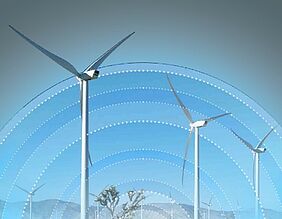This year edition Renewable Energy Statistics by IRENA gives a comprehensive overview on renewable power generation capacity for the last decade (2012-2021), actual power generation for 2012-2020 and renewable energy balances for over 150 countries and areas for 2019-2020.
According to the report, total renewable generation capacity in 2021 increased to 3,068 GW as compared to 2 808 GW in 2020. The trend of recent years has continued, and the largest growth of renewable energy sources has been in Asia, with China traditionally accounting for most of this growth.
Renewable electricity production in 2020 was 7.4% higher than in 2019, mostly due to a sharp increase in Europe and North America. The total amount of electricity produced from renewable energy sources in 2020 was 7,468 TWh. Almost 60% of this amount (4,356 TWh) came from renewable hydropower, ahead of wind energy (1,589 TWh), solar energy (844 TWh), bioenergy (584 TWh), geothermal energy (95 TWh) and marine energy (1 TWh). 70% of electricity generated from bioenergy was from solid biofuels, 16% from biogas, 13% from renewable municipal waste and 1% from liquid biofuels.
In 2020, solar power generation increased by 22% and wind power generation by 12% compared to 2019. Renewable hydropower generation growth tripled in 2020 (+155 TWh compared to +48 TWh in 2019).
Asia has added 236 TWh of renewable electricity, making the region a leader in 2020, and raising Asia's share of global renewable electricity production to 42%, ahead of Europe and North America with 19% and 18%, respectively, and followed by South America (11%), Eurasia (5%), Africa (2%), Oceania (1%) and Central America and the Caribbean (˂1%).
Most growth in wind generation occurred in Asia and North America (+64 TWh and +50 TWh respectively), followed closely by Europe (+47 TWh). China accounted for almost 85% of the whole wind generation in Asia, ahead of India (11%) and Japan (1,5%). The leaders in Europe were Germany (27%), the UK (15%) and Spain (11%).
Asia also accounted for most of the increase in solar generation (+78 TWh out of the global increase of +154 TWh) in 2020. Germany, Italy and Spain are the leaders of solar generation Europe,, together accounting for about 55% of renewable electricity, produced in 2020.
The global share of renewable energy in electricity production in 2020 was 27.7%, up from 25.9 in 2019. Approximately 10 countries, among them Iceland, Paraguay, Costa Rica, run their electrical grids either entirely or nearly entirely on renewable energy, provided mainly by hydro-power. There are about as many countries that get almost 0% of their electricity from alternative sources. Among them are Kuwait, Saudi Arabia and Turkmenistan.
Further, IRENA records a continued decline in public investment in renewable energy in 2020. While these investments totalled $22 billion in 2018 and $18 22 billion in 2019, in 2020 they fall to $17 22 billion. This decline occurred for all technologies except solar (+ USD 0.8 billion) and geothermal (+ USD 0.2 billion).
